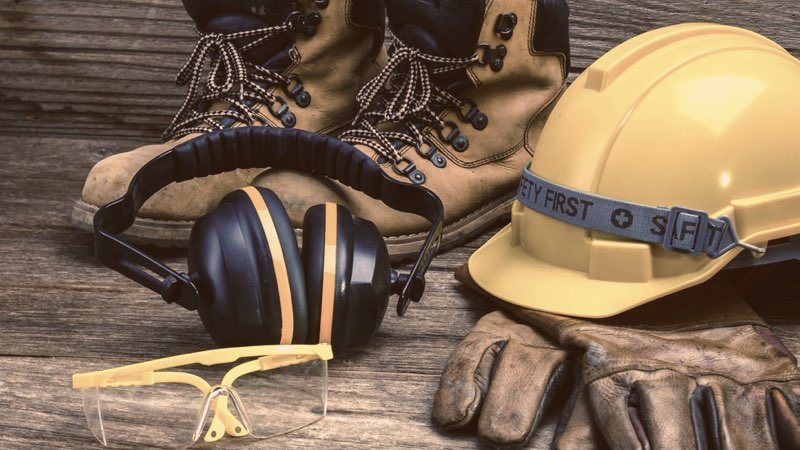For operations managers, managing contractors and subcontractors worksite safety in rails and utilities is a complicated responsibility to say the least. Working alongside many people in your shoes, we understand the challenges you face, every day. With more than 140,000 miles of rail in the United States, at least 200,000 miles of high voltage lines, and 5.5 million local connection lines, you’re monitoring large masses of land with multiple vendor relationships including lots of subcontractors. Plus, add on to that, extremely high daily burn rates and hazard potential as well as the problem with real-time reporting due to widespread worksites.
If you want to get on top of you subcontractors worksite safety in the rails and utilities industries, take a look at these five tips that can lead to lower risks and increased efficiency.
Top 5 Subcontractors Worksite Safety Tips:
1) Digital Verification for Multi-Employer Safety Policy
Based on OSHA policies, jobs with various types of contractors have varying rules for each type of employer regarding the reporting of worksite incidents. According to OSHA, the Multi-Employer Policy identifies the types of employers present on a construction project site, helps to determine the scope of safety duties and responsibilities for each employer type, and defines the reasonable care they are responsible for providing to ensure the safety of their employees.
When managing large rails and utilities sites with multiple contractors and vendors, you’re acting as the controlling employer and as the operations manager, it’s important that your team effectively communicates the responsibilities of each subcontractor to ensure quick and accurate reporting, reduced downtime, and minimal safety risks.
One method for minimizing risks and ensuring that protocol is met is implementing a digital tracking system to monitor relationships with subcontractors. Through these platforms, you can verify that each new team member has read the safety documentation and have them sign off on it before entering the job site.
2) Emergency Communication Protocols
In the event of an emergency or safety hazard, it can be difficult for subcontractors to file a report if they do not have cell phone service. Given the vast amount of ground covered by rails in the U.S., communication has always been a key challenge.
Using a digital tracking platform for contractor management can help improve reporting and can get you closer to real-time incident awareness for operations managers and stakeholders thanks to improvements in technology. In time, it’s expected that system integrations will grow more seamless and cellular/wifi reach will increase to about 95% coverage, which helps in more rural areas.
If using digital systems on smartphones, it’s important that your subcontractors keep their devices fully charged and have a backup charging device so they’re able to submit reports as soon as possible if and when necessary.
3) Safety Hazard Tracking and Remedy Process
To ensure proper tracking of safety hazards in rails and utilities, there must be a standard protocol for reporting and follow-up. To increase subcontractors worksite safety, they will rely on a trusted process to make you, the controlling employer, aware of any safety hazards. According to OSHA, the best way to mitigate risks and decrease the time to finding a remedy is by following these steps:
- Create a site-specific safety program
- Enforce the safety policy on each project site
- Provide regular supervision of project activity and safety
- Fulfill budget and schedule requirements
- Exercise authority to correct safety hazards
- Exercise authority to require other specialty employers to correct safety hazards
- Conduct and document frequent and regular inspections of subcontractor site-specific work
- Conduct and document frequent and regular safety meetings with subcontractors
Standardizing the documentation process helps create a log that can be easily referred to and tracked in the case of an incident, which can help lead to quicker resolutions and reduced fines for your organization.
4) Pre-Planning for High-Risk Days of Work
The number one contributing factor for fall-related injuries is a lack of pre-planning. As the operations team for the controlling employer, it’s your responsibility to adequately communicate if there will be specific hazards at any point during the job and send reminders before, on, and during those days. Consider using an automated notification system or management system for your contingent workforce needs.
5) Digital / Online Training for Worksite Risks
Over the past few years, we’ve seen increased adoption of digitally driven onboarding, training, and certification platforms. In the rails and utility industries specifically, the deeper adoption of web-based training and certification for contractors and subcontractors will empower operations managers and allows for real-time tracking and monitoring for these vendor relationships. This can create higher efficiency on work sites and reduce the need for in-person training. As a result, no more wasted days of in-person training or excuses when it comes to contractors or subcontractors not being up to speed.
We understand the needs of operations managers working in the rails and utilities industries. If you have any questions about how to increase the safety of subcontractors on your job sites, do not hesitate to reach out to here our team by clicking here. Thank you for reading!
**This article is for informational purposes only. It is not intended to constitute legal advice.


